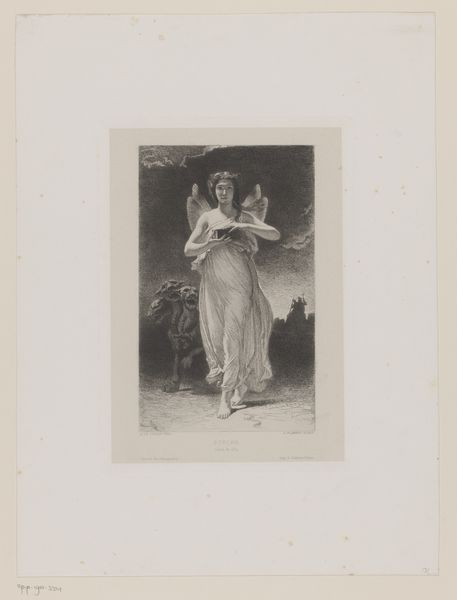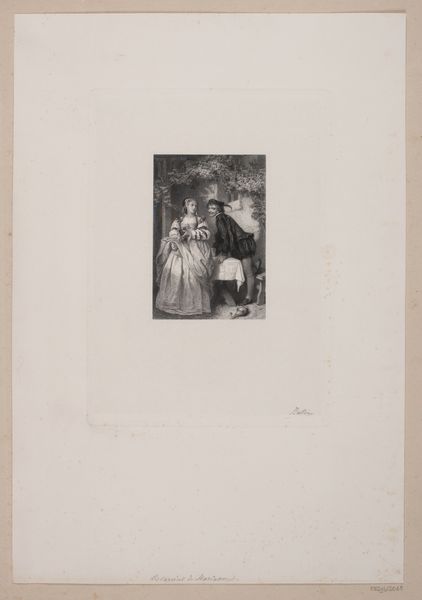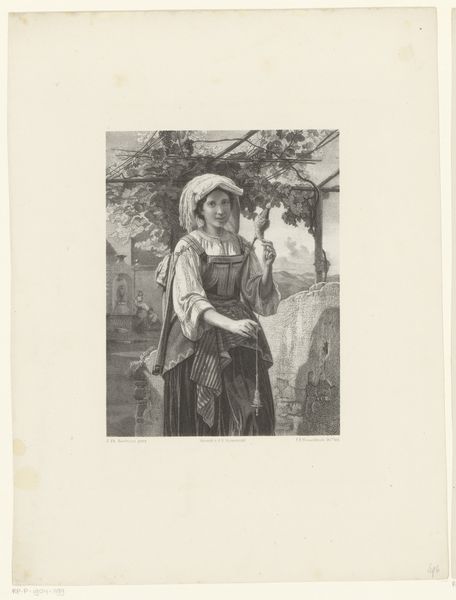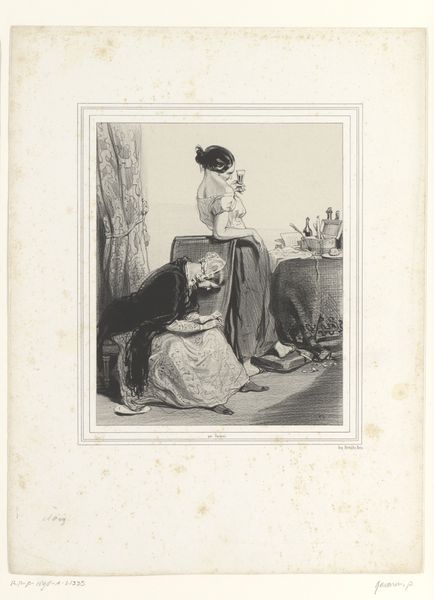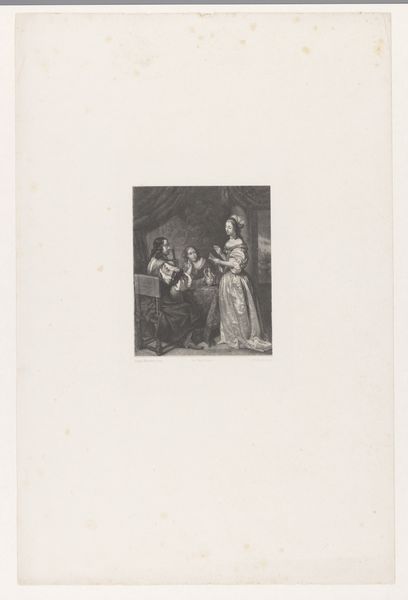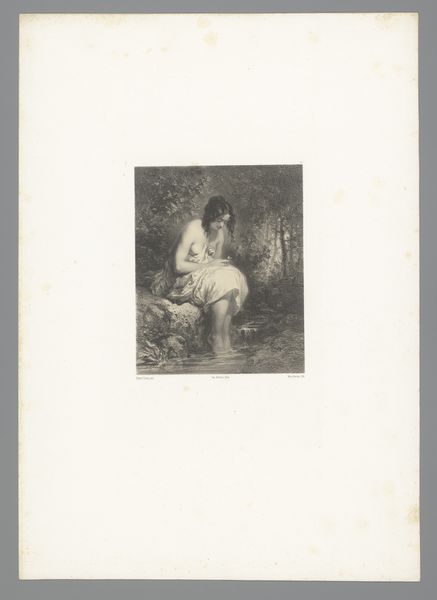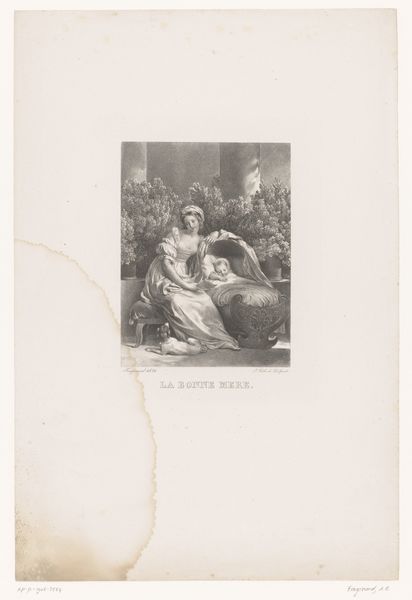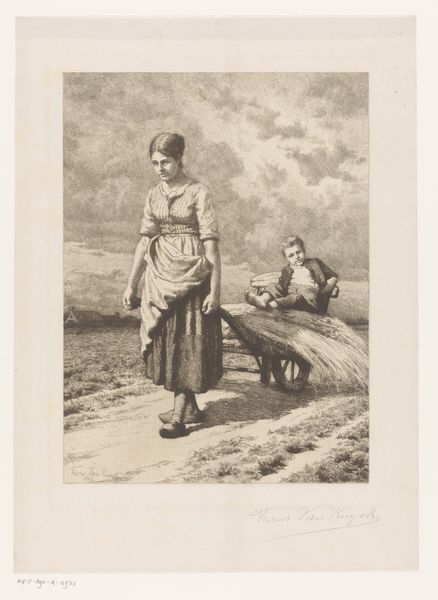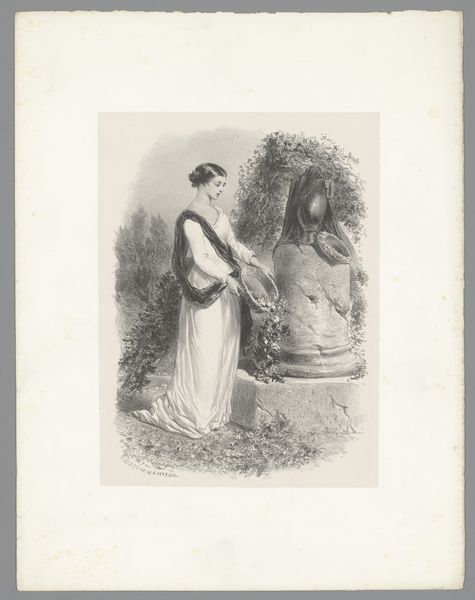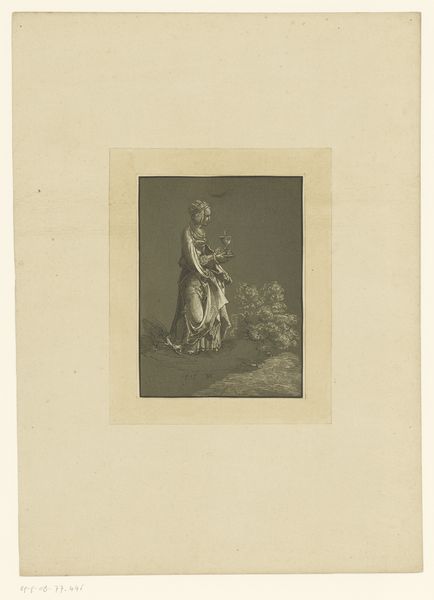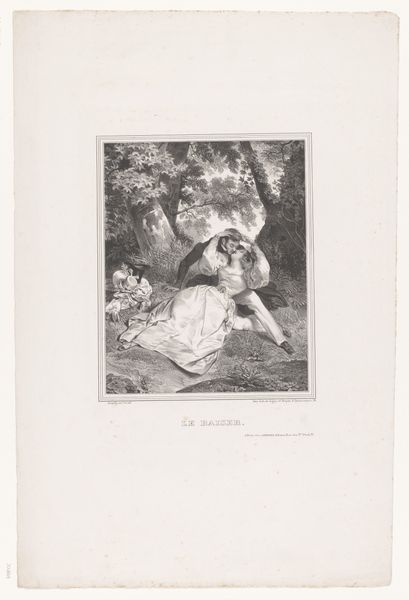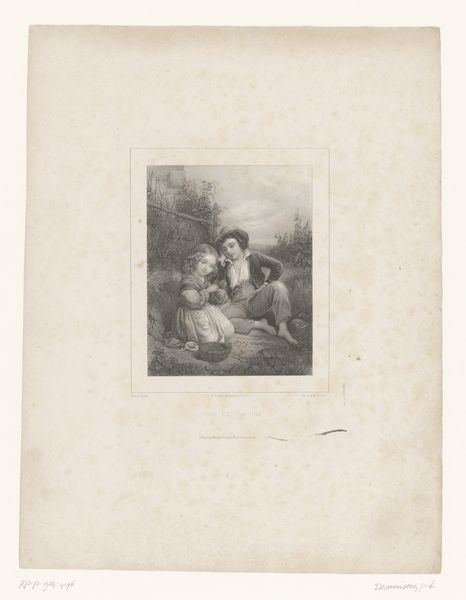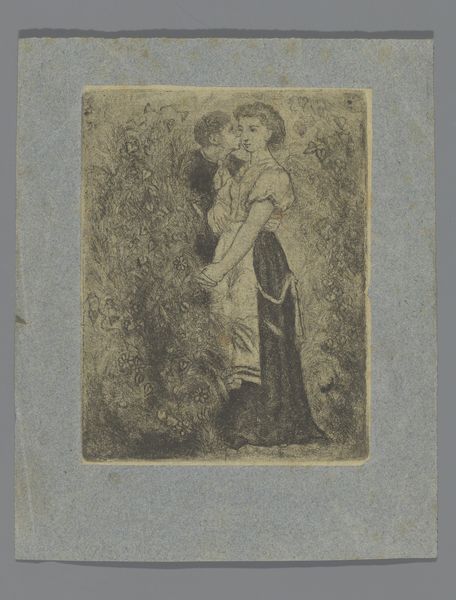
Vrouw met een wandelstok in een veld, achter haar nog drie personen before 1910
0:00
0:00
Dimensions: height 335 mm, width 204 mm
Copyright: Rijks Museum: Open Domain
Curator: The etching before us, attributed to Léopold Flameng, and titled "Vrouw met een wandelstok in een veld, achter haar nog drie personen" captures a figure posed rather prominently in a landscape. Before 1910 is all we know about its date. Editor: There’s an air of performativity about the whole thing. It looks like a tableau vivant, with its contrived theatricality and those subordinate characters lurking in the background. It's very artificial. Curator: Consider the woman's placement. Flameng utilizes sharp contrasts of light and shadow to draw our eye immediately to her figure, almost spot-lighting her face. This emphasis serves to both isolate her visually and elevate her above the rest of the composition, no? Editor: But isolates her from what? It reads like class stratification laid bare – the idle, elegantly dressed woman displayed for our consumption while other figures remain hidden. This etching encapsulates 19th century hierarchies: a detached upper-class subject at center stage while exploited labour lingers outside of our clear view. It smacks of a society celebrating its decadence! Curator: It's more complex. The intaglio etching gives it a certain texture, the gradations in tone that soften the effect – notice the subtle play of light in the skirt. He clearly experiments here. The overall composition does indicate elements of academic art practice blended with more Impressionistic touches in the naturalistic background. The effect makes it rather more appealing to me than otherwise. Editor: Well, her very deliberate gaze also plays a significant role; does she hold our gaze or deflects it? Who, in 1910, was expected to engage directly with whom? And is that represented clearly or subverted? The interplay hints at contemporary debates about visibility, representation, and agency. Curator: What Flameng’s intentions actually were, we’ll perhaps never know, but these elements of formal juxtaposition elevate this genre painting beyond mere academic exercise. Editor: Agreed. What this artwork lacks in iconoclastic force it makes up for in subtlety and quiet subversion. An ambivalent echo chamber reflecting power at the dawn of a new century.
Comments
No comments
Be the first to comment and join the conversation on the ultimate creative platform.
